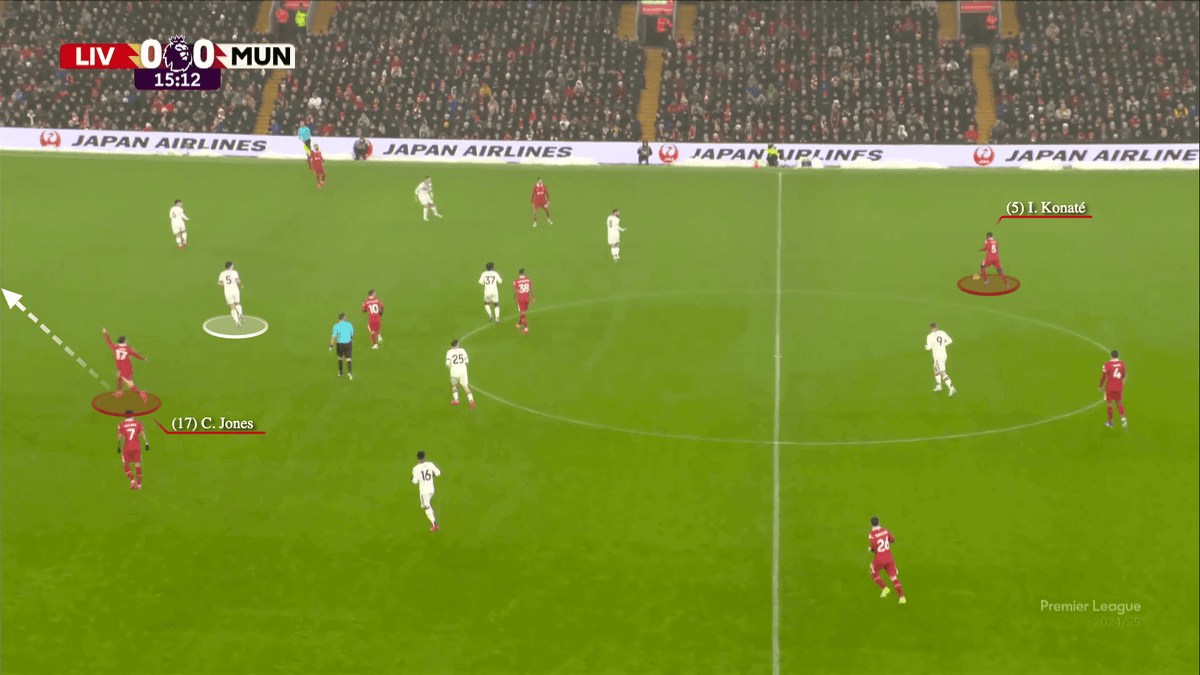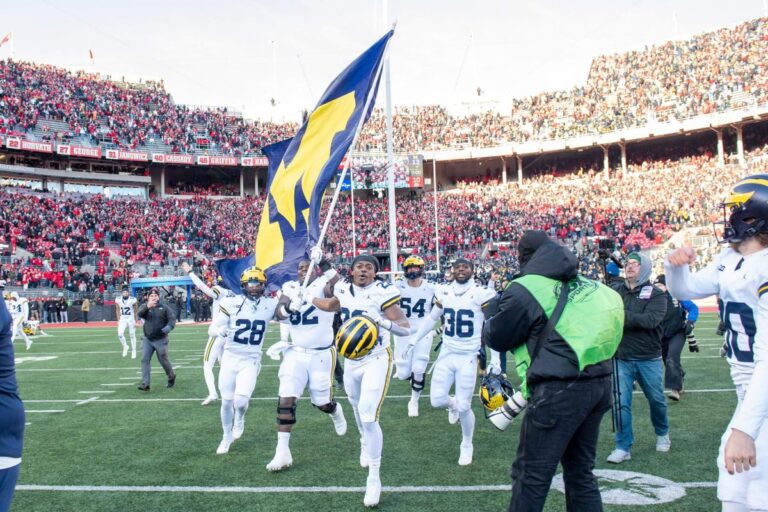When watching a game of football, we only truly consume a snippet of the action. We’re naturally drawn to the fun stuff occurring on the ball, but zoom out a little, and there’s beauty laid out in the carefully choreographed off-ball movements across the pitch. Runs beyond the defensive line are crucial to a team’s attacking potency, particularly in a Premier League that is increasingly physically demanding.
Deep runs are probably the most important thing in football, said Liverpool manager Arne Slot on Amazon Prime after their 3-1 win over Leicester City. You don’t even always have to play to a player who makes the deep run – but then you can maybe create a bigger one-v-one situation for your winger, so the more deep runs you make, the more chance you have of winning a game.
The Athletic identified a similar trend in Slot’s side earlier this season, with the underlapping runs made beyond the opposition defensive line allowing Liverpool’s wingers to come inside to cross, as shown by Mohamed Salah’s assist for Curtis Jones against Chelsea.
Runs beyond the ball remain a key theme of Liverpool’s campaign under Slot. As well as the obvious candidates of forwards Salah, Cody Gakpo, and Luis Diaz, Slot’s midfielders have shown a notable propensity to break beyond the opposition last line with those runs from deep.
For example, in their recent Premier League game against Manchester United, Jones is desperately trying to catch the attention of Ibrahima Konate as he identifies a gap in the defensive line.
While the ball does not reach Jones, Harry Maguire’s attention is drawn to the 23-year-old as the ball continues to be circulated. Five seconds later, that space is exploited with another deep run from fellow midfielder Alexis Mac Allister, with Salah’s clipped ball struck first time by the Argentina international.
Using SkillCorner’s Game Intelligence model, which extracts contextual metrics from broadcast tracking data, we can measure the number of off-ball runs made by each team when they are in possession, focusing on runs made in behind.
For those unsure, this type of run simply logs when a player is attacking space behind the last defensive line – like the example below. Crucially, the player does not have to receive the ball for the run to be logged.
When looking across all Premier League teams, Liverpool’s 4.1 runs in behind per 30 minutes in possession – adjusted to control for each side’s share of the ball – is the third-most this season, with Crystal Palace topping the charts, edging ahead of Aston Villa.
There is no right or wrong method here, but the graphic above highlights the stylistic approach taken by each team in attack. For example, Arsenal and Manchester City are comparably low by this measure, which reflects their desire for a more patient, possession-based build-up that looks to squeeze the opposition back – gaining territorial dominance, which often leaves less space behind the opposition defensive line.
As for Southampton, well, let’s not compound their misery.
Using SkillCorner’s Game Intelligence model, we can measure the number of off-ball runs made by each team when they are in possession, focusing on runs made in behind. For those unsure, this type of run simply logs when a player is attacking space behind the last defensive line – like the example below. Crucially, the player does not have to receive the ball for the run to be logged.
When looking across all Premier League teams, Liverpool’s 4.1 runs in behind per 30 minutes in possession – adjusted to control for each side’s share of the ball – is the third-most this season, with Crystal Palace topping the charts, edging ahead of Aston Villa.
For league-leading Palace, the runs of Jean-Philippe Mateta are crucial to Oliver Glasner’s attacking approach, providing space for Eze to drift into, with Munoz’s cutback allowing Eze to shoot first time – albeit missing the target.
Conversely, Mateta’s improved link-up play has allowed Sarr to thrive as a No 10 by making runs from deeper.
It is a part of his game that Sarr has been actively working on in training since his summer arrival.
Source link




